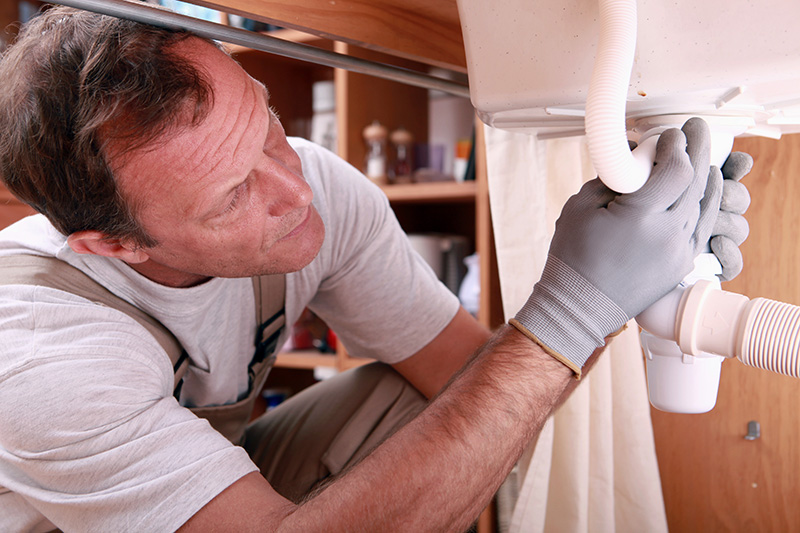A home is the most expensive thing you’ll ever purchase in your life, so it makes sense to look after it. Much like a car, regular maintenance is essential to keep your property looking great and running efficiently.

Unfortunately, with our increasingly busy lifestyles, many homeowners take a ‘reactive’ approach to home maintenance – attending to problems as and when they occur. Worse still, some of us are guilty of turning a blind eye to obvious issues, hoping they’ll simply ‘go away on their own’. This attitude may cost you money because when it comes to houses, small defects left unaddressed can escalate into catastrophic structural issues or expensive repairs at lightning speed.
To effectively protect the value of your home or investment property, and avoid wasting money on preventable, costly repairs, it’s better to take a proactive approach to home maintenance – regularly check for potential problems, and attend to fixes and replacements in a timely fashion.
Not sure where to start? Following is a brief preventative maintenance checklist – these tasks can be scheduled on a monthly, seasonal or yearly basis.
Gutters:
If your gutters or downpipes are blocked or leaking, water gets into places it shouldn’t, such as the interiors or the foundations. Gutters that don’t drain properly can tear away from their fixings, and the constant presence of water can cause surrounding timbers to rot.
- Clear leaf litter from the gutters twice a year.
- Check for rust/holes, and ensure water can flow down the drainpipes.
- If anything leaks, call in a roof plumber.
Roof:
Your roof is vulnerable to damage from storms, falling branches, and the ravages of time, so have it checked over by a professional roofing specialist annually.
- When clearing out the gutters, also clear vegetation and debris from the valleys of your roof, to prevent rust holes from developing.
- Inspect under the eaves and overhangs for water damage.
- Check the interior ceilings for tell-tale watermarks or mould.
Termites:
Termites eat structural timbers and by the time you realise you’ve got an infestation, the damage is often already done. Most insurers don’t insure against termite damage because it’s considered preventable with regular maintenance. This means arranging annual professional pest inspections is non-negotiable – it’s the only way to detect and eliminate termite activity before any serious harm is done.
Kitchen, bathroom and laundry:
Undetected leaks in wet areas can quickly lead to both cosmetic and structural damage.
- Regularly monitor for under-sink leaks in water inlet hoses and waste pipes.
- Check water connections to the dishwasher, plumbed fridge and washing machine.
- Ensure grouting between tiles is clean and intact, and re-grout as necessary.
- Check for leaks around the shower screen and hob, and reseal gaps with silicone.
- Assess the shower recess for signs of waterproofing failure, e.g. watermarks, stains, loose tiles or excessive mould growth in and around the shower itself. Also, check the other side of the shower recess wall for signs of damp such as blistering paint or mould. If you suspect a leak, call a builder in for advice.
Exteriors:
Timber will warp, crack or rot if left exposed to the elements and therefore requires regular upkeep.
- Scrub and oil timber decking twice a year.
- Timber doors, window and door frames, and fascia boards should be re-painted or sealed before the existing finish begins to crack or peel. Likewise for painted weatherboard.
- Timeframes between paint jobs will vary according to the timber’s exposure to sunlight and rain but could be anywhere from every five to 10 years.
Garden:
- Do an annual audit of the trees around your property. Look for signs of disease, dead branches, termite activity, and overhanging branches. Call a professional arborist to carry out any corrective maintenance. (Check with your local council to find out if you need permission before trimming or removing trees.)
- Discourage rodents and snakes by clearing away garden clippings and cutting back overgrown shrubbery.
- Clear drains around the house once a month to prevent flooding.
- Brush concrete and paved areas with a stiff broom to prevent moss, algae or lichen from creating a slip hazard. Pressure-hose once a year.
While it may seem daunting, investing time and money in regular maintenance will save you dollars in the long run and help preserve the value of your home or investment property. And when it is time to call in the repairman, Smartline Rockingham mortgage advisers can help you with financing options.

